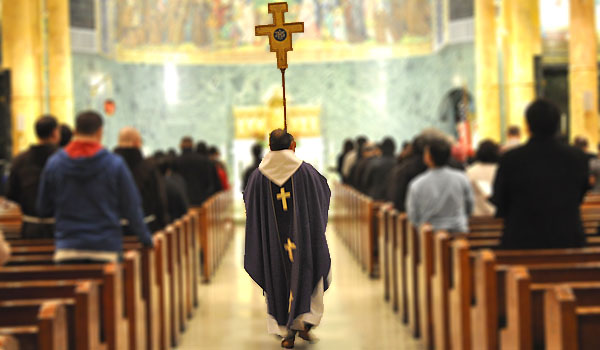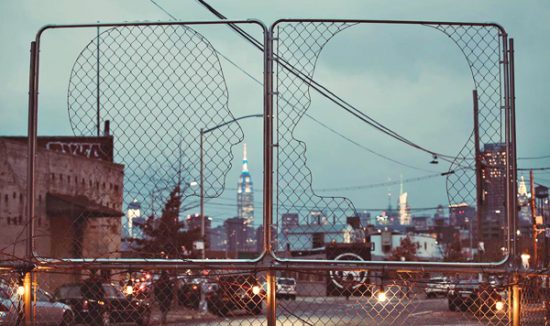What is it about Bay Ridge that makes it a place where white supremacists and Arabs, and other religious, linguistic and ethnic groups could live together side-by-side?
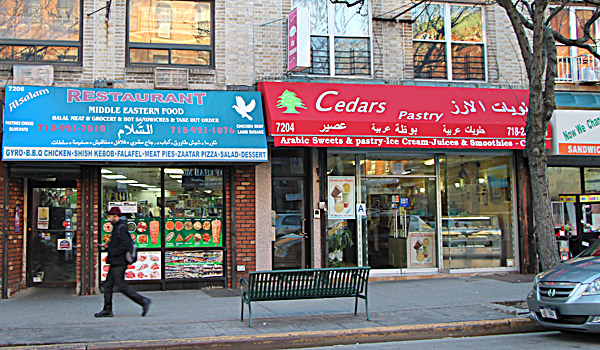
April 2, 2019
“There’s a sandn***** right there.”
I wish there’s a way to convey volume in quotation, because the word isn’t yelled. It isn’t whispered, either. It sounds like something the wind picked up somewhere far away, and whisked past my ear just quickly enough for me to register that someone had the gall to call an Arab that in Bay Ridge, Brooklyn.
We’re relatively new to the neighborhood, having only arrived two to three decades ago. But there are plenty of us. It seems as though some of the natives aren’t happy with our presence.
I’d just stepped out of a car on a street corner at 3 in the morning, having finished my fourth night working as a server at a sushi bar in TriBeCa. It’s the summer of 2017, and I’m back in New York visiting my friends and family after completing my first year of graduate school. I turn in the direction of the sound and see a group of white men on the other side of the road; likely a group of young adults in their late-teens or early-twenties, swaying back and forth.
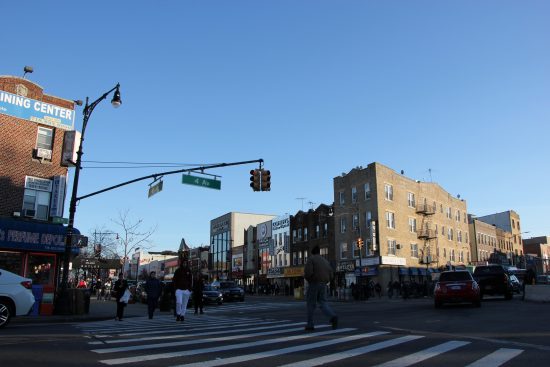
Of course their courage is liquid. It’s always liquid. I want to confront them, and I feel the rage commix with uncertainty at the thought of launching myself at a group of strangers. I clench my fists and remember it’s the middle of Ramadan. My father’s digital Islamic clocks will call us to prayer at dawn, which is in 40 minutes. My mother is likely awake, preparing the pre-dawn meal. I turn and walk into their house.
I shuffle over to the kitchen. My mother is up and she smiles, preparing the tea she and my still-asleep father will imbibe before abstaining from food or drink for the next 16 hours. I kiss her hand and forehead. I think of telling them what happened, but I realize my father would most certainly yield to the rage and dash outside. He’s old, and from the perspective of a healthcare professional, deeply embattled. I think it would be good to fight a group of white supremacists with my dad, and for a dilated moment, I revel in hallucinatory images of the weak and the few rising up in defiance of the debasement they’re forced to endure. A father and son riding into battle.
And then I remember where we are. I think of how the parents of the young racists, and the parents of people who look and act like them, will come to their defense. Claim they’re just children. I don’t know what to do, but I’m aware of the potential for unthinkable violence. And so, when my mother slips into the bathroom, I pick up two steak knives and I walk back to the house’s front door. I’m not going to risk my life to reclaim whatever pride I feel was stolen from me, but I’ll die before anything happens to my parents.
And so I sit. Two knives on my lap. Waiting.
I open the door and look across the street, at the corner where they stood. They have left. I close the door and I look at the mirror hanging to my right. I see the steak knives in my hands, and I feel like an idiot. I brace myself for the shame. It creeps slowly. Always slowly. Not enough of a man (shame is a toxic conspiracy, you see)? You let them get away? They threw a racial slur at you, and you let them go? So what if there were 10 of them? What are you, a coward?
I sit, and I breathe.
Somewhere in the recesses of the Cro Magnon brains that those young men inherited is an acute fear. One so resonant they felt compelled, at 3 o’clock in the morning on a beautiful summer night, to insult a stranger for a perceived difference. One not based on phenotype: some of them looked Italian or Greek, which is to say they looked like me — dark features and big hair.
Their fear was based on something more fundamental. It was, and likely continues to be, a fear of an all-consuming difference. The kind that displaces and replaces what they know and love. In the most extreme case, it erases them, and takes away the most valuable thing a group of people can have: property, land, and physical spaces in which a community can grow.
“New New Yorkers would have to spend mind-boggling amounts of money to drive out the locals, even more than they would spend in neighborhoods where they’ve already driven out the locals. “
The story of Bay Ridge in 2019 is thus the story of a neighborhood with a rapidly evolving demographic, and the fear that animates some of its natives. It’s the story of which groups are allowed to enter and reshape a community, and which groups are designated foreign and dangerous to that community’s social and cultural integrity.
Ultimately, it’s the story of how marginalized immigrant groups overcome the structural handicaps with which they’re forced to contend, and how they exert influence and carve out a place for themselves and their kin.
I think of what that encounter, full of potential for violence, could mean in the wake of the right swing that nations around the world made in the two years since it happened. The fear on display that night wasn’t unique, and is at the moment inspiring jingoism in places as physically disparate as Brazil and the Philippines.
I wonder what about Bay Ridge makes it a place where white supremacists and Arabs, as well as representatives of countless other religious, linguistic, and ethnic groups, could live together, side-by-side, for decades at a time.
In the middle of the winter of 2019, I go for a walk. There’s something special about this place, I think. These few square blocks contain multitudes. By considering the physical spaces – the buildings, shops, schools, and restaurants – along with my memories of growing up here, I hope to understand what makes it unique. To wrangle the story of the neighborhood from its concrete manifestation.
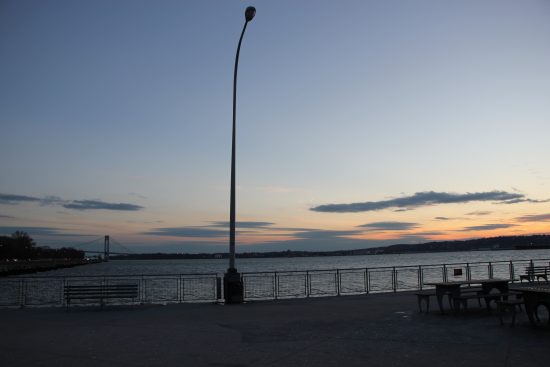
Bay Ridge is outlined by 63rd Street in the north and 101st Street in the south. From west to east, it cleaves into Shore Road, Narrows Avenue, Colonial Road, Ridge Boulevard, 3rd, 4th, 5th and 6th Avenues, with the latter merging into Fort Hamilton Parkway on 83rd Street.
Shore Road bobs and weaves, up and down along smooth hills, snaking a path parallel to the Belt Parkway but separated from it by almost two miles of parks and public spaces. It’s a paradise for the young families, retirement communities, and high schools dotting the neighborhood’s western half. Adjacent to the intersection of Narrows and Shore is an entrance to a path that traces the perimeter of a circular gazebo, leading to a small park with chess boards etched into stone tables lying between stone benches.
A few yards in, the park opens into a garden flanked by massive London Planes shooting out of the upward sloping hill to the left, and the downward sloping hill to the right. At the other end of the neighborhood, on the Bay Ridge Pier by 65th Street, one can clearly see the Freedom Tower and the nest of skyscrapers that compose the Financial District.
Though constituted by multiple streets and avenues, Bay Ridge’s soul is anchored and defined by two – 5th and 3rd.
On its eastern end, 5th Avenue is home to one of, if not the most, vibrant communities of migrant and expat Arabs in the United States (I’m ignoring Dearborn, Michigan, because comparing any Arab community in the U.S. to Dearborn’s is like comparing a remote Siberian outpost to Moscow, at least in terms of population and civilizational densities).
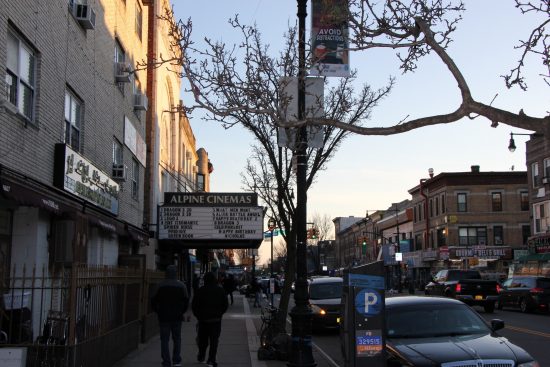
Close to the northern end along 5th, between 68th street and Bay Ridge Avenue, lies Masjid Mus’aab, a mosque some would describe as very conservative, others as only appropriate. For years it was, and continues to be, a focal point of the Bay Ridge Muslim community, as well as the New York Muslim community at large.
While the majority of Bay Ridge’s Arabs are relatively recent Muslim immigrants, there’s a sizeable and storied Arab Christian community that arrived and settled during the early 20th century. The Palestinian pastor of the Salam Arabic Lutheran Church on 80th Street, Khader el-Yateem, even ran in the 2017 Democratic primary for a seat on the New York City Council. Although he won only 31 percent of the vote, he seemed to have energized the political aspirations of a whole crop of second-generation Arab immigrants thirsting for meaningful political representation.
Near 5th Avenue’s southern end is its intersection with 86th street. Formally designated one of South Brooklyn’s Business Improvement Districts (BIDs), the area between the 4th and 5th Avenue intersections with 86th is packed tight with shops, including a Century 21, a Banana Republic, a local eyewear shop, a sneaker depot, and multiple Levantine restaurants and pizzerias.
BIDs themselves are consortia of merchants, residents, elected officials, and property owners overseen by the New York City Department of Small Business Services. In Bay Ridge, the 86th Street Bay Ridge BID is constituted by 160 businesses spanning 131 properties.
From Masjid Mus’aab down to 86th, 5th Avenue is full of stores peddling everything from foods and textiles imported from the Middle East, to travel packages to Makkah for ‘Umra or Hajj. Many of the shops have characteristic awnings emblazoned with names in both Arabic and English.
Much of my adolescence was spent crawling from one end of the neighborhood to the next, from the arcades next to the Alpine Theater adjacent to the mosque (featuring the cheapest movie ticket prices in town: $6 for adults during the week), down to what I still believe was the first Five Guys in Brooklyn. I had my hair cut at a barbershop with a funny English name – New Unisex Salon or something – owned by a Palestinian man we’ll call Ashraf. Naturally, the shop was nicknamed Ashraf’s.
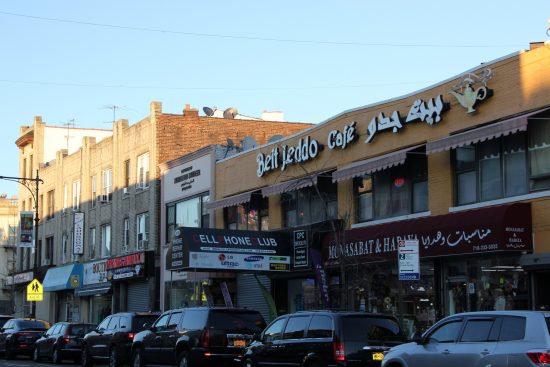
My sophomore year of high school, one of Ashraf’s employees gave me the equivalent of a mullet. He ran his hands through the party in the back and assured me it was “sexy.” I wasn’t so sure, and ended up so traumatized by having to walk around looking like a rookie cop in an 80s sitcom that I didn’t cut my hair for another six months. This of course only exacerbated my problem: the business in the front grew unruly, and the party in the back exploded into a full-on riot.
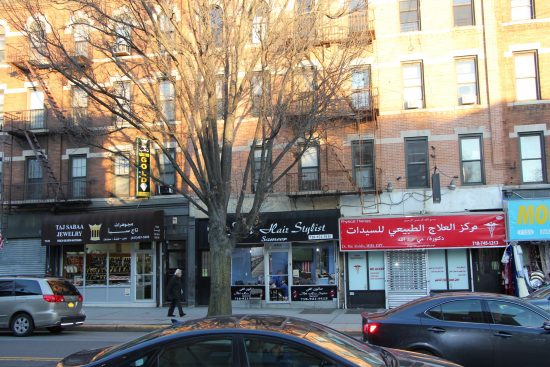
Based on the extent to which Arabs have been able to cultivate a community of their own along 5th Avenue, an observer may never expect the kind of racial tensions that have come to characterize Bay Ridge over the last two decades. As of the 2010 census, the neighborhood’s racial makeup is 66.4 percent white, 1.8 percent Black, 0.1 percent Native American, and 13.3 percent Asian.
Where Arabs lie on the limited spectrum is unclear. The uncertainty is made worse by the fact that some of us are forced to identify as white, as per the census questionnaire which defines a white person as anyone of European, North African, or Middle Eastern descent. Given an alternative universe where Arabs are not villainized and otherized by the U.S. as a result of 20th century political machinations (As well as the history of colonization and Orientalism which preceded them), it’s possible that we would’ve slipped into White America.
That, like our Southern European neighbors, we would’ve enmeshed ourselves in whiteness so as to achieve elevated social standings and economic status, our souls be damned. The reality is that Arabs in the U.S., especially in a neighborhood like Bay Ridge, are on one side of a deep gulf, with White America located squarely on the other side.
I find myself contemplating whiteness, and who gets to be white, as I make my way to the corner of 86th Street and Ridge Boulevard. There I stand and consider a neighborhood oddity: three schools, standalone educational institutions, all within literal steps of one other.
On the corner of 85th and Ridge is The Dimitrios and Georgia Kaloidis Parochial School. It’s presumably open to all, but aggressively marketed to students of Greek descent. (At least that’s what I infer from the Greek flag adorning the school’s outermost facade.) The school’s location is partly the reason why every September the annual Greek Heritage Festival is held on Ridge Boulevard, between 86th and 83rd Street.
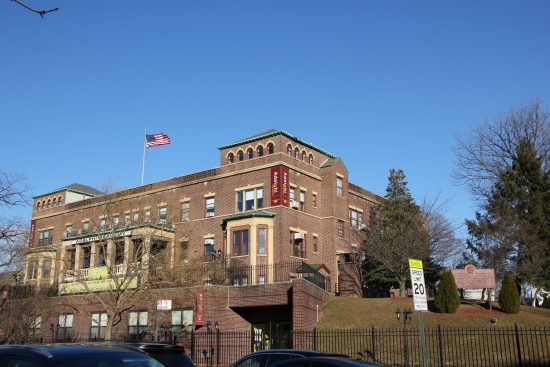
Facing The Dimitrios and Georgia Kaloidis Parochial School, and occupying the whole block from 85th to 86th, is The Adelphi Academy of Brooklyn. A prep school with tuition in the tens of thousands of dollars per annum, Adelphi’s students attend etiquette classes, wear the usual prep school uniforms, and peer down from a building set along a hill which seems intended to inspire awe, but only ever reminds the viewer of the elite boarding schools sprinkled along New England.
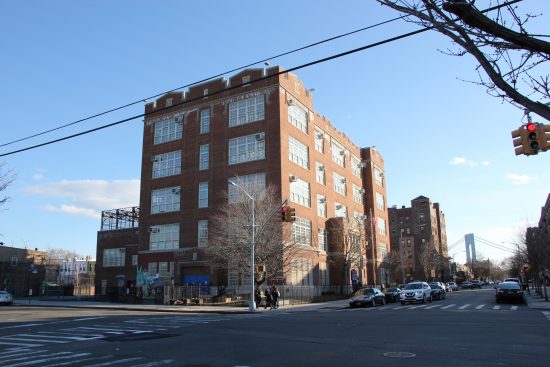
Across the street from Adelphi is PS 185, Bay Ridge’s local public elementary school. For years, scaffolding enwrapped PS 185 like an external shell the school could not or would not shed, and its playgrounds resembled an archaeological dig. Today it gleams in the winter sunlight, gorgeous and luminescent, as though it can finally puff its chest out and look its wealthy cousin across the street in the eye. “See,” it seems to say, “you’re not better than me at all.”
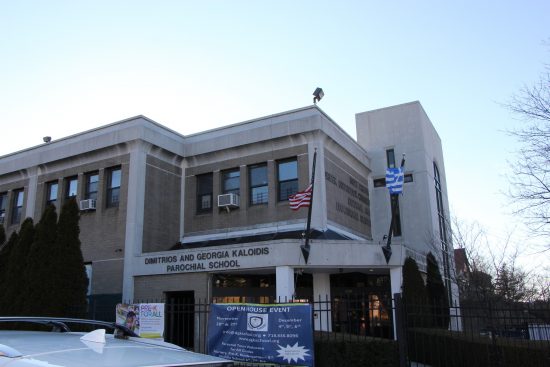
Together, the three schools encapsulate the Bay Ridge of the present.
Adelphi and PS 185 stand on opposite ends of a class divide that, somewhat ironically, maintains the neighborhood’s integrity in the face of impending gentrification. While wealthy transplants continue to displace the rest of Brooklyn’s natives, Bay Ridge’s residents have largely stayed put. The multiple demographic changes taking place here are different from those assailing the north – the people moving into Bay Ridge aren’t recent college grads with cash to burn on overpriced apartments close to the L train.
Friends and I have long wondered why this may be the case. Could it simply be that Bay Ridge is too far from Manhattan, where most transplants work, for any of them to consider the move? The only easily accessible train is the R – a nervous breakdown waiting to happen if a train ever could be. Rumor once had it that the new South Brooklyn Ferry, which sails between the Bay Ridge Pier and the Financial District and Midtown, was a conspiracy hatched by the city government to encourage individuals who work in those Manhattan neighborhoods to move to Bay Ridge.
It didn’t seem to work. Though, I must admit, my heart skips a beat whenever I see someone wearing tortoise shell glasses and sporting a New Yorker tote get off on Bay Ridge Avenue.
Standing in that nexus between two schools which appeal to wildly different neighborhood moieties, I conclude that Bay Ridge could actually be too class-diverse. As folk wisdom teaches, in order for a group of individuals or institutions to gentrify a neighborhood, they must drive out the natives by quietly hiking up prices for everything, from rents to bagels.
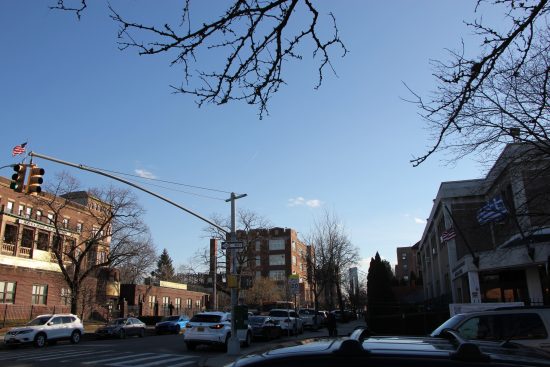
It seems Bay Ridge is slightly immune to that scheme because its natives occupy every tax bracket, and have coexisted for generations. Some are working-class descendants of working-class forebears. Others are incredibly wealthy, and own properties worth millions of dollars. This wealth gap is noticeable on a block-by-block basis: homes set between 4th and 3rd Avenues are markedly smaller than the homes lying between 3rd Avenue and Ridge Boulevard, themselves smaller than the homes between Ridge Boulevard and Shore Road. If Zillow is to be trusted, the neighborhood’s median home value erupted between 2010 and 2019, nearly doubling from about $585,000 per home to about $927,000.
New New Yorkers would have to spend mind-boggling amounts of money to drive out the locals, even more than they would spend in neighborhoods where they’ve already driven out the locals. Maybe this is the reason class tensions don’t seem to run as high as one would expect them to in a neighborhood as economically stratified as Bay Ridge: at the very least the wealthy residents keep potentially wealthier residents out, making life a bit more tolerable for the workers and laborers who define and construct the neighborhood. Bay Ridge may very well remain unchanged up until the revolution itself.
Today, I’m particularly interested in The Dimitrios and Georgia Kaloidis Parochial School. Bay Ridge is just as much a Greek space as it is Irish-Italian or Arab. I wonder what I always wonder when I think about our cousins north of the Mediterranean: How was it for the first Greek migrants to Brooklyn? Did they have to endure the same kind of racism that Palestinians, Egyptians, Yemenis, and Moroccans have to endure?
I’m reminded of something a high school acquaintance, who is of both Italian and Greek descent and grew up in Bay Ridge, once told me in describing her family, “It’s a little bit of mozzarella, and a little bit of feta.”
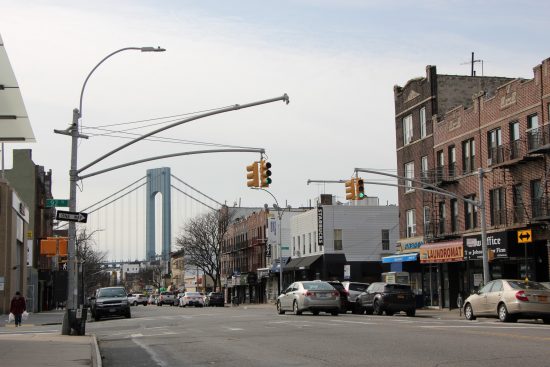
No, I don’t think Bay Ridge’s Greek community had to put up with the sort of hatred that its Arabs are forced to endure because, in the final estimation, Greece isn’t foreign. The first migrants to the U.S. from Greece may have been considered different or unusual by newly minted American descendants of immigrants from central and northern Europe, but the state of Greece was never the source of unending fear and terror. It’s not only European, but the Ancient Greek heritage is integral to the American identity that many of Bay Ridge’s white natives maintain is their own.
In the popular imagination, the history of Ancient Greece precedes Rome’s in the imagined timeline that connects the latter’s empire with America’s. And while the Greeks of today are by no means ancient, they’re still not other. Their presence isn’t perceived as a threat to the social and cultural fabric of the community: feta-covered gyros are as welcome in a Bay Ridge buffet as mozzarella-covered pasta. Greeks are allowed to exist unbothered because they are, at this particular historical and cultural moment, not considered a threat to whiteness, and Arabs are.
I continue walking east along 86th towards 3rd Avenue. For as long as I can remember, it and western Bay Ridge have been a firmly white Brooklyn community with Brooklyn-white tendencies: Yankees fitteds, creaseless Js, and overbearing masculinity intermixed freely with massive American flags, the only (consistently successful) Republican politicians in the city outside of Staten Island, and, more recently, Blue Lives Matter flags.
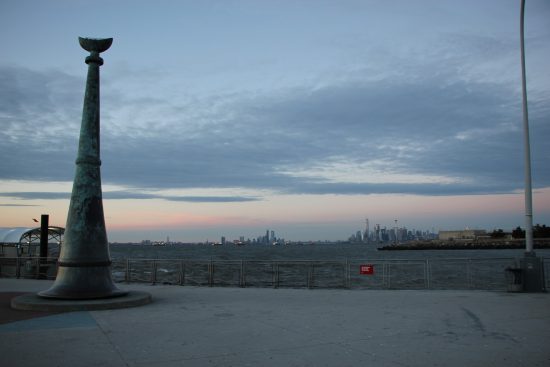
In contrast to 5th Avenue, 3rd Avenue encloses one of the highest concentrations of bars and pubs in New York, as well as some of the best Italian restaurants in the country. Catch-22, The Salty Dog, O’Sullivan’s, Pipin’s Pub, The Kettle Black, and Kitty Kiernans are a handful of the literary names branding the avenue’s watering holes. Nino’s, Nonno’s, Vesuvio, Areo, and Casa Calamari are some of the Italian restaurants and pizzerias that inspired the hole-in-the-wall where John Travolta famously stacked his slices and sauntered away on Bee Gees beat.
As I approach 3rd and 86th, I see the Taza Produce Market on the intersection’s southeastern corner. Once a butcher shop and a deli, Taza specializes in imported Middle Eastern foods. I wonder how this new incursion into white Bay Ridge is perceived by the natives. I stand on the corner opposite Taza and I look north, towards the Cocoa Grinder between 86th and 85th. It’s a flagship location for a new chain of coffee shops started by an elementary school friend named Abdulrahman, an American of Egyptian descent.
During the summer of 2018, I ran into Abdulrahman outside of that same Cocoa Grinder. He was speaking with a woman I didn’t know, and he quickly enfolded me in the conversation. The woman walked away and we followed her. I asked Abdulrahman where we were going, and he said, “Going to see this guy who’s running in the midterms.” We made a left on 86th and walked up to a small office with the candidate’s name displayed prominently on the wall above the front entrance: Andrew Gounardes.
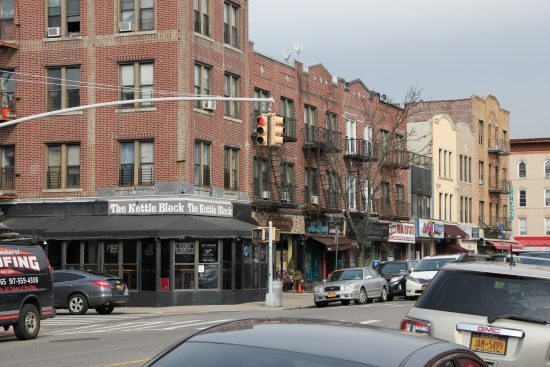
A Democrat of Greek descent running for the New York State Senate representing the district containing Bay Ridge, Gounardes stood outside of his office, speaking with the people his supporters ferried to him from different corners of the neighborhood. He shook our hands, and we exchanged pleasantries. When the subject turned to business, Abdulrahman grew very serious, “The problem is property owners are very racist.” Abdulrahman tried to explain the many ideas he had for expanding his thriving business, and how the prejudice he faced constrained his ability to do so.
It was clear he made the candidate uncomfortable. At the mention of racism, Gounardes looked down and sheepishly added, “Yes, that is a problem.”
He understood the gravity of Abdulrahman’s concerns, that much was clear — politicians only avoid their constituents’ worries when they don’t have any solutions. At the time, I thought he was bypassing an issue he didn’t care about. That he knew who he needed to win over in order to seize a historically Republican district, and that it wasn’t us. I stood corrected when, months later, two friends of Greek descent, Alexandrous and Vasili, told me they watched Gounardes sustain boos from a crowd at an event held for the New York Greek community. He’d tried to breach the subject of racism, and the community’s complicity in propping it up in Bay Ridge. Attendees responded with heckles and indifference.
Gounardes ultimately won the election, flipping a former red district blue, but that did nothing to change the hearts and minds of the people who live here. I stand on the corner of 86th and 3rd, and wonder how many years it would be before an Arab represents a focus of Arab-America. Would Bay Ridge remain one long enough for that to happen?
My gaze drifts from the Cocoa Grinder to Taza. The latter overflows with customers, and the former is so successful members of my own family expressed reserved shock at how many people of every background frequent a space that looks designed for transplants in Bushwick.
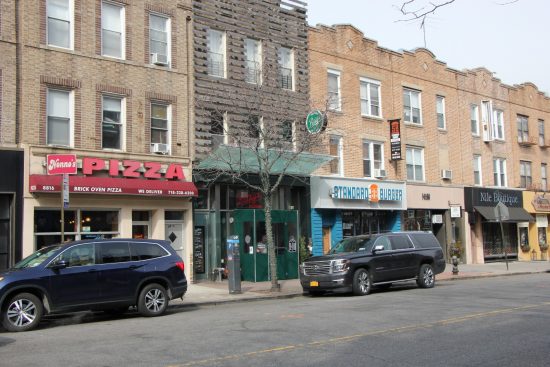
I think of the adage that haunts Black America: You have to be twice as good to get half as far. Is this how we’re going to make a place for ourselves? By smooth-talking landowners to convince them our money is as good as anyone else’s? I wonder how long it took the Arab businesses along 5th Avenue to grow. How many landlords did Arab businessmen and women have to go through before one of them agreed to sell his or her space? How many of those spaces are just leased, with no telling when or how the Arabs will be asked to leave?
I walk towards the corner of 86th and 4th, and I follow a train of bodies exiting the station. I drift between 4th and 5th, losing count of the shoppers out and about on a beautiful, sunny day. I love it here. I feel cradled – so warm I can’t help but smile. Equal parts content and secure. The kind of hot solidity that comes from knowing a place, and knowing one’s position in that place. And I know this place. I know it so well I can name the trees.
I see people of every shape and size, color and creed, walking, comfortable in their environment. Or, at least, it’s the comfort that I notice first. I peer a bit longer and I sense something lying directly beneath it. A deep anxiety – certain uncertainties animating the crowds falling out of Century 21 and filtering into Plaka and Karam and Chipotle. Bay Ridge is a special place, and part of the reason why is at once the most obvious and the most painful to consider.
I look back on the crowds and I remember that the vast majority, 99.9 percent if the census is to be trusted, aren’t Native American. And then I have it. That same vision. My family, comfortable and happy in the living room of my parents’ home, full of chatter and laughter. All of my siblings and nieces and nephews and even four cats. A light knock on the door. Two young people looking uncertain. One of them calmly explaining they’re siblings, and the descendants of a family that once lived where my parents now live. Me inviting them in, and discovering they’re Lenape, currently residing in the Delaware Tribe of Indians in Oklahoma. They tell us they never thought they would one day have the opportunity to return to their home, and now they have returned.
“And the group with most of the land currently in its hands is having to contend with this inexorable fact of American history: there will always be a next, and it might not include them.”
The self-hatred is unbearable – the immense privilege of benefiting from another’s enduring pain is soul-crushing. Bay Ridge is a place where multiple groups can coexist regardless of the fears or prejudices they hold because it endures atop a graveyard preceded by a violent, horrific genocide. A historical sequence of events that bears more than a passing resemblance to the one which ejected my family from Palestine, and eventually led to us occupying land stolen from another group of people with ethnic, cultural, and historical ties to it. Links which have long been overlooked, suppressed, or buried with their predecessors.
The majority of Bay Ridge’s residents are at the very least spiritually tied to somewhere else. In my experience, that connection leads to an anxiety regarding everything, from what people might expect of their futures, to whether or not they’ll get to live in the same neighborhoods where they were born or grew up. It’s that same anxiety that I feel today, wandering between 4th and 5th, and it’s intimately connected to the fear that drove those young men to verbally harass me with a racial slur at 3 in the morning on a beautiful summer night.
Because the fear of having its lands taken from it is most potent to a community when that land was already taken from someone else. When a land’s ties to a group whose culture, beliefs, and history are defined by it are erased, the land transforms into a blank canvas, open to all and owned only by those who have the means. It becomes available to the groups that occupy it next, and that make it their own.
It experiences forever growing pains, cycling through the birth, maturation, and death of different communities, on and on, for as long as people continue to pine and strive for it. It accepts all new arrivals, who know how fortunate they are to be there, reaping the benefits of a place that at one point in the past was just a fantasy belonging to someone else.
Today, the lands constituting Bay Ridge are slowly transitioning from one group to another — from one collection of peoples to the next. And the group with most of the land currently in its hands is having to contend with this inexorable fact of American history: there will always be a next, and it might not include them.
After roaming back and forth aimlessly for an hour I turn around and head back in the direction from which I came.
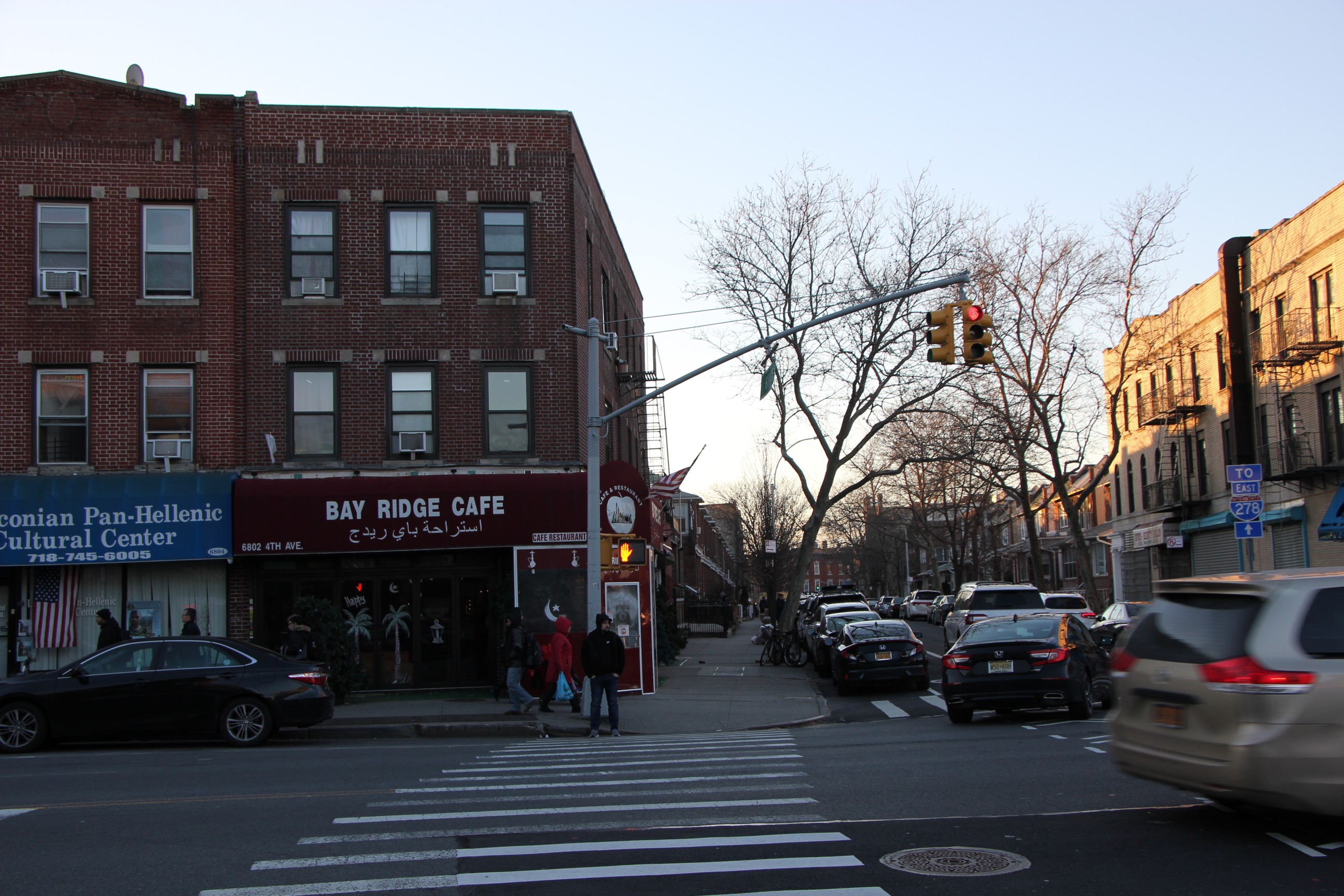
You may also be interested to read these stories:
Bay Ridge Loses a Primary but Gains a Movement
A New Resistance in Brooklyn’s ‘Little Palestine’
These Streets are Ours Too: Arab Women Rise

